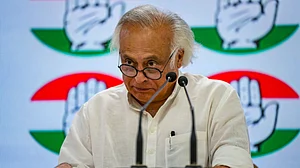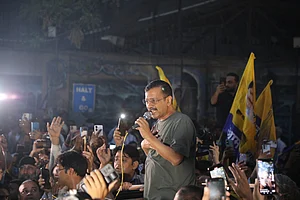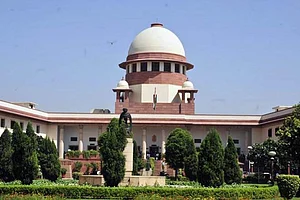
Name: The Election Commission of India
The Election Commission of India (ECI) is a constitutional body established by the Constitution of India empowered to conduct free and fair elections in India. The Election commission is headed by a Chief Election Commissioner and consists of two other Election Commissioners.
Since 1950, the Election Commission of India was a single member body with only the Chief Election Commissioner. As per The Election Commissioner Amendment Act, 1989, the Commission was made a multi-member body with two additional election commissioners who were appointed to the commission for the first time on 16 October 1989. On 1 January 1990, the post of election commissioners were abolished again. The Election Commission was once again made as a three member body on 1 October 1993. The commission is headquartered at Nirvachan Sadan in New Delhi. The Election commission is headed by a Chief Election Commissioner and consists of two other Election Commissioners. They are further assisted by Directors General, Principal Secretaries, and Secretaries. The chief election commissioner does not have overruling powers and any decision is taken by the opinion of the majority among the three.
In the states and union territories, the Election Commission receives support from the Chief Electoral Officer (CEO) of each region, who is responsible for overseeing the election operations. The District Magistrates/District Collectors, Electoral Registration Officers, and Returning Officers are responsible for election duties at the district and constituency levels.
The Chief Election Commissioner and other Election Commissioners (Appointment, Conditions of Service, and Term of Office) Act, 2023 stipulates the appointment and duration of the election commissioner. According to Section 7 of the act, the President of India appoints an election commissioner based on the Prime Minister's recommendation, who leads a selection committee with the Leader of the Opposition in Lok Sabha and a member of the Union Council of Ministers nominated by the Prime Minister. The President appointed them earlier based on the Prime Minister's recommendation. In March 2023, the Supreme Court of India decided that a committee made up of the Prime Minister, leader of opposition, and Chief Justice of India would be responsible for making appointments until new legislation is passed on the matter. The Chief Justice was substituted by a committee-appointed member of the Prime Minister under the law passed in 2023.
The CEC can hold office for up to six years starting from the day they take office. Nonetheless, the CEC steps down from their position if they reach the age of sixty-five before the term ends.
The Election Commission of India is authorized by the constitution to oversee impartial elections at the national, state level, and for the offices of President and Vice-President. The election commission sets the schedule for the submission of nominations, voting, tallying, and declaration of outcomes. A Model Code of Conduct is issued for political parties and candidates to ensure that elections are conducted freely and fairly. The first issuance of the Code of Conduct was in 1971 for the 5th Lok Sabha elections and has been periodically updated since then. The commission compiles electoral rolls and maintains the voter list up-to-date. In 1993, Electors Photo Identity Cards (EPIC) were implemented to avoid electoral fraud. Nevertheless, some legal papers, like ration cards, can be used for voting under specific circumstances.
The commission has the authority to ban the spreading or broadcasting of voting tendencies through opinion polls or exit polls in order to sway voters.
The election commission runs different electronic platforms like websites and mobile apps to facilitate different functions like handling complaints, verifying voter lists, sharing details about candidates, declaring results, and overseeing tasks.
Elections in India involve the use of Electronic voting machines (EVMs) along with options for Postal voting and accommodations for individuals with disabilities. The Election Commission implemented electronic voting machines (EVM) to decrease fraud and enhance effectiveness. The Electronic Voting Machines (EVMs) were first tested in 1982 during a by-election in Paravur assembly constituency in Kerala at a small number of polling stations. Following successful testing and legal investigations, the commission opted to implement these voting machines on a widespread basis. NOTA was included as a choice on voting machines in 2014 and is now required to be offered in all elections. The distinct emblem of NOTA, a voting form marked with a black X, was implemented on September 18, 2015. In the 2015 Bihar Legislative Assembly election, electoral rolls containing candidate photographs were used on EVMs for the first time.






























